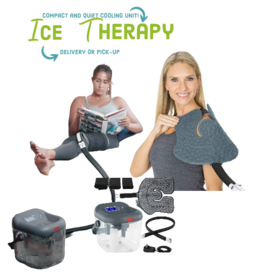Blog Should you consider the Importance, Challenges, and Advancements in Oxygen Therapy?
Mon, 12/02/2024 - 02:03
Oxygen, a critical component of the air we breathe, plays a vital role in sustaining life. While the atmosphere contains a majority of oxygen, its purity and availability are often compromised, necessitating supplementation in various medical scenarios. Oxygen therapy has become a cornerstone of modern medical practice. Oxygens are used in emergency rooms and patients' homes. Particularly doctors prescribe to treat conditions like Chronic Obstructive Pulmonary Disease (COPD).
In the United States, oxygen therapy distribution involves collaboration between insurance companies, medical practitioners, and suppliers of oxygen-related equipment vendors. Healthcare expenses, including oxygen therapy costs, are often dictated by these entities. For instance, while a medical practitioner prescribes oxygen therapy for COPD, insurance coverage determines the affordability and accessibility of the treatment. When insurance fails to cover these costs, patients are burdened with out-of-pocket expenses.

Oxygen cylinders are inexpensive and are covered by most insurance patients often rely on larger oxygen sources to refill portable canisters. . However, the cost of oxygen therapy involving portable oxygen concentrators varies based on the patient's needs and the mode of delivery. Continuous flow systems and portable oxygen concentrators (POCs) have different requirements, with However, inefficiencies in these systems highlight the need for optimization in delivery methods to improve therapy outcomes.
Oxygen, while enhancing combustion, can pose risks, particularly when combined with smoking or improper administration. Precise adjustments in flow rate and oxygen source quality are essential for safe and effective therapy. For example, duringgeneral anesthesia, oxygen is administered at specific purity levels from reliable sources to ensuresafety.
Advances in Personalized Oxygen Therapy
The increasing use of portable oxygen concentrators (POCs) has revolutionized oxygen therapy, particularly for ambulatory patients. Intermittent-flow devices, which deliver oxygen in pulses during inhalation, reduce waste and improve efficiency compared to continuous flow systems. Advances in pulse delivery systems, such as reducing pulse delays, have demonstrated significant improvements in oxygen uptake.
Patient-specific factors such as lung morphology, disease state, and respiratory physiology significantly influence the effectiveness of oxygen delivery. Personalized approaches to oxygen therapy are crucial for achieving optimal results. Intermittent-flow devices, with their customizable pulse characteristics—volume, width, and timing—offer opportunities for tailored treatments that better meet individual needs.
Despite advancements, the wide variety of POCs and their settings complicate device selection and adherence among patients. Proper education on prescription guidelines, device usage, and reimbursement policies is critical. The equivalence of pulse and continuous flow delivery depends on multiple factors, including device settings and patient breathing patterns. Simplified, lightweight devices with precise, immediate pulse delivery systems could greatly enhance therapy efficiency, particularly during physical exertion.
Oxygen therapy continues to evolve, driven by innovations in technology and an increasing focus on personalized care. By addressing inefficiencies in delivery systems and tailoring treatments to individual needs, the medical community can improve outcomes and enhance the quality of life for patients reliant on oxygen therapy.
Tags
- contest
- event
- supplies
- design
- brand
- video
- Compression
- upright walker
- four wheel walker
- rollator
- wheelchair
- Ostomy
- elegantly
- elegantly
- accessibility
- Mobility
- knee walker rental
- knee scooter sales
- knee scooter
- post operative shoe
- anti-embolic stockings
- pain management
- cryotherapy therapy
- hot cold compress
- compression stockings
- lift chair
- wound Care
- air purifier
- fall prevention
- cushion
- oxygen therapy
- cpap, bipap
- Hospital Bed
- Life Aide
- EMS
- recovery
- splint
- knee brace
- Bathroom
- patient lift
- medical supply
- Wound dressings
- Lightweight Wheelchair
- hospital beds for sale
- sky medical supplies rentals
- compression socks
- Tegaderm Dressing
- Adult Diapers
- Rollator Walker
- Bed Wedge Pillow
- Hospital beds
- Patient Lifts and Slings
- Portable Oxygen Concentrator
- Patient Lift Slings
- knee scooter rental
- folding mobility scooter
- mobility scooter
- medical shoes
- raised toilet seat
- hospital beds for rent
- lift chair recliner
- chair lift
- electric wheelchair
- Power Lift Recliners for Elderly
- Senior Walkers
- Bedside Commodes
- whill wheelchair
- compression hose
- Whill Electric Wheelchairs
- Bariatric Wheelchair
- Recliner Chairs with Lift
- Colostomy Bag
- Crutches
- Medical Wedge Pillow
- skin barrier tape
- Post Surgery Ice Machine
- Bedside Commode
- chair lift recliners
- cane holder scooter
- lift chair prices
- drop arm commode
- rollator walker with ergonomic seats
- Hospital Bed Rental
- Wheelchair Tray
- Golden Technologies Lift Chair
- Nova GetGo Junior Rollator
- power lift recliners
- Knee Scooters and Crutches:
- stand up walker for seniors
- stand up walker as seen on TV
- Women's Walking Canes
- Knee Immobilizers
- Bed Wedge Pillow
- Medical Supply Stores
- Sit to Stand Lifts
- Grab Bars
- Compression Gloves
- incontinence bed pads
- Lift Reclining Chair
- Knee Walker Scooters
- Hernia Belt Near You
- Mobility Scooter Stores Near Me
- Folding Knee Walker
- Oxygen Concentrator Store
- Inogen Battery
- Electric Bed Frames
- Placing Lift Chair
Related Posts
Get weekly articles in your inbox on the latest medical supply news, exclusive deals, and helpful health tips.
Thu, 05/05/2022 - 03:23
How to Prevent skin infection in Older Adults
Skin infection is a common problem among older adults.
Fri, 05/26/2023 - 02:59
Freedom on Wheels: Empowering Adults with Electric Mobility Scooters to Explore the World!
Electric mobility scooters have revolutionized how adults with mobility challenges navigate the world around them.






